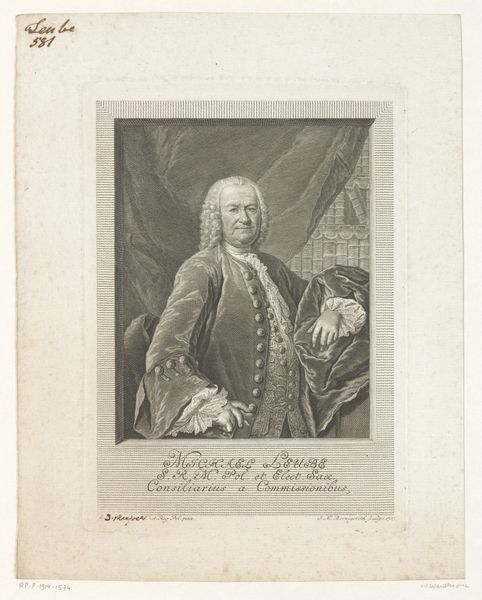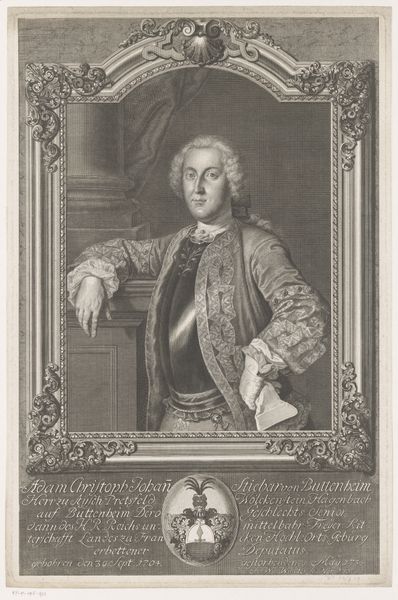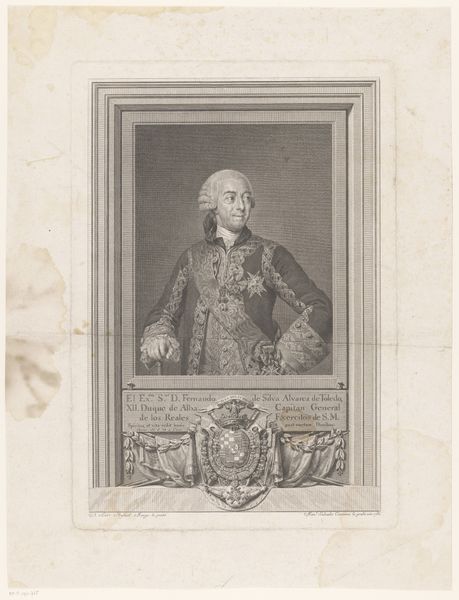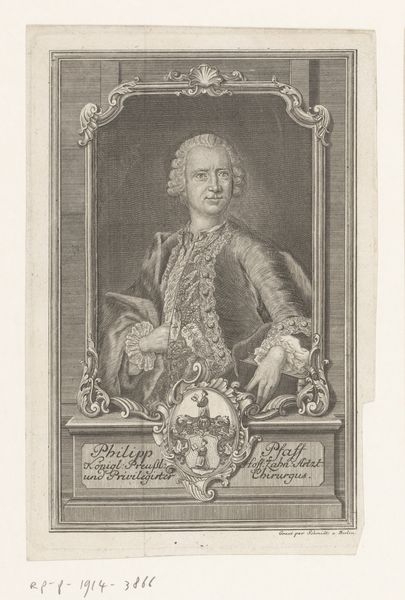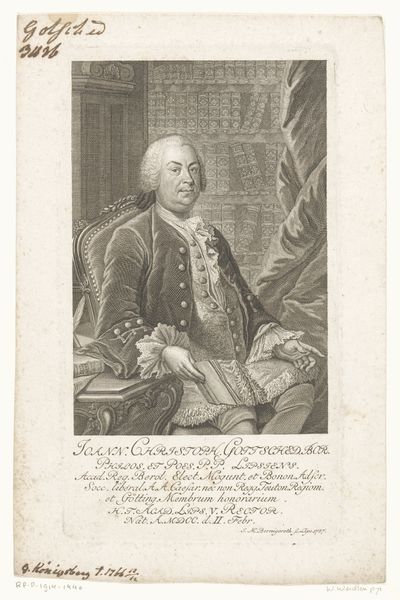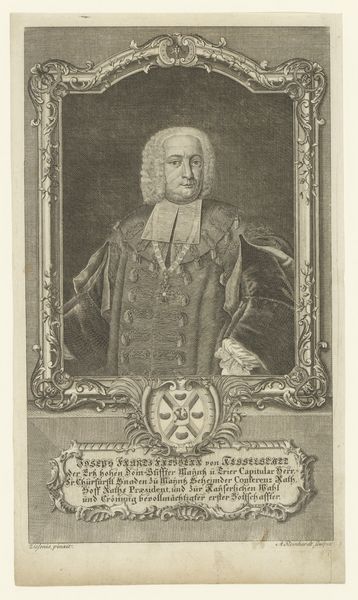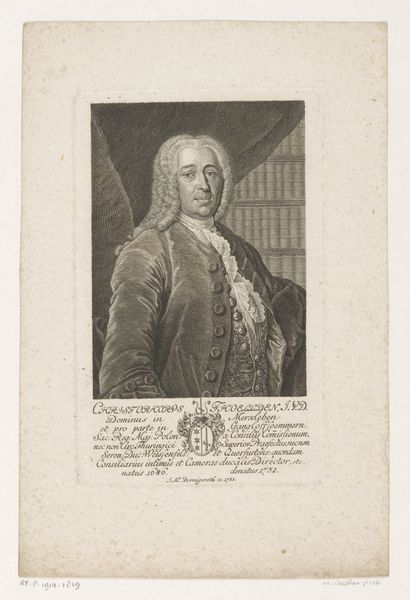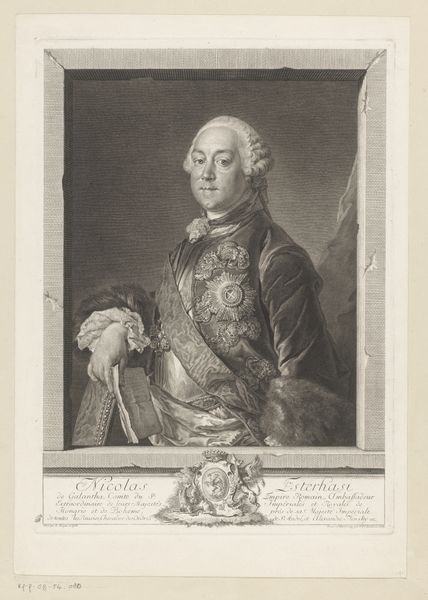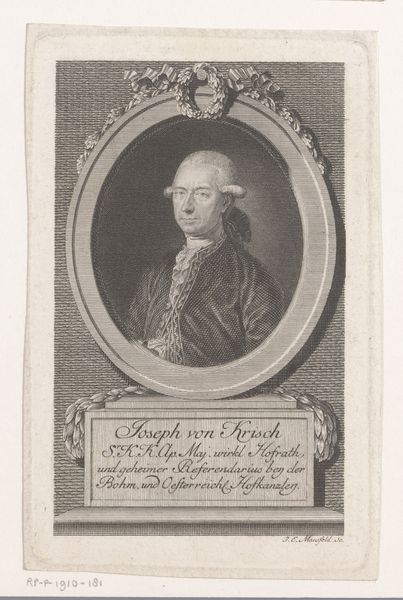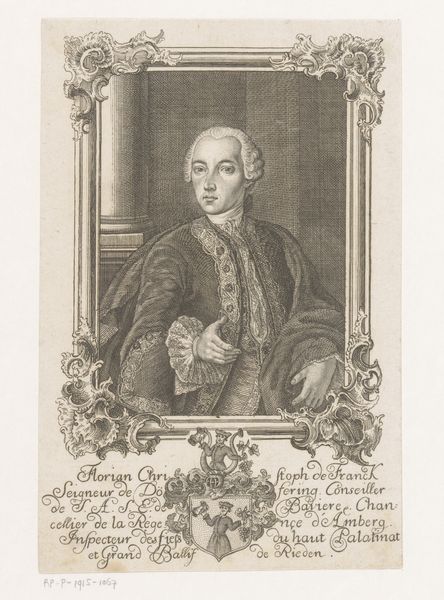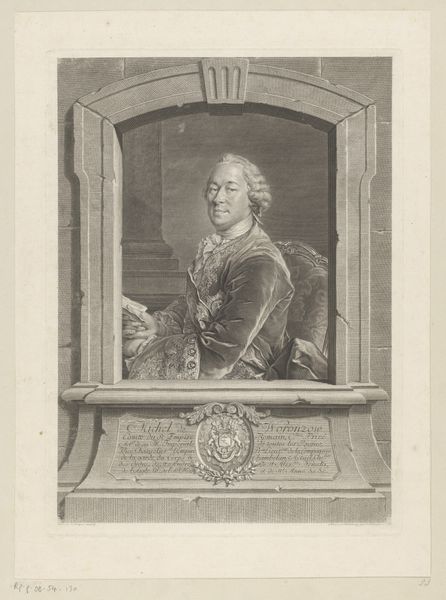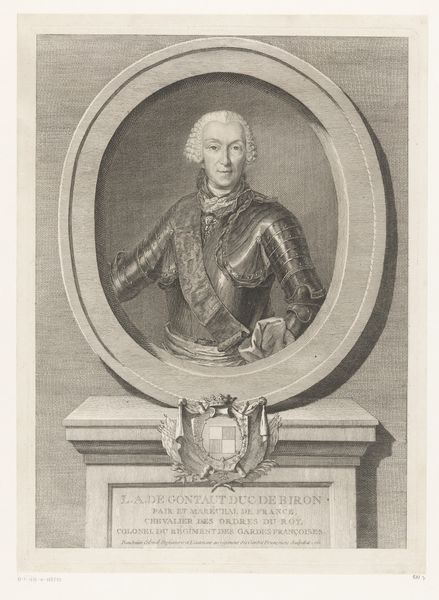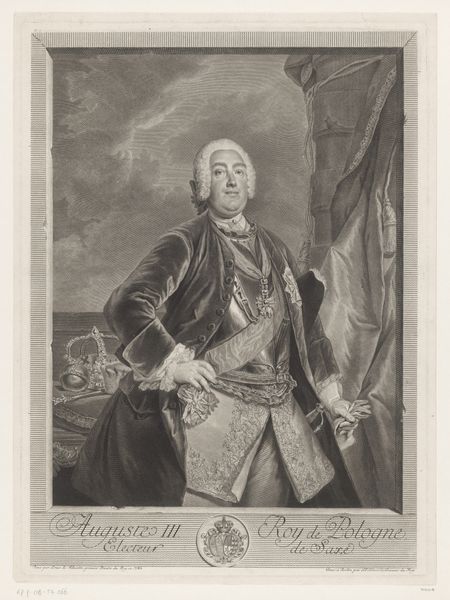
Dimensions: height 575 mm, width 383 mm
Copyright: Rijks Museum: Open Domain
Curator: Take a look at this 1773 engraving by Johann Jacobe, a portrait of Alexander Galitzin. It is a print, currently housed at the Rijksmuseum. Editor: Oh, that Baroque swagger is undeniable! Look at that hand, practically daring you to challenge his pronouncements. The lighting, the details in the coat… I feel like I could step right into a dusty, yet lavish, study. Curator: The way Jacobe has rendered the fabrics, you can almost feel the weight and texture of them. He seems to celebrate materials like the luxurious velvet coat trimmed with lace or even the plain looking quill and ink set at the ready for political or diplomatic duty. I see an interest not just in showing, but in *making* this clear to us as consumers and viewers. Editor: There is a funny contradiction here, because despite the clear wealth on display, there is this subdued color palette that tempers the overt grandeur, a self-awareness, if you will. I almost think it wants to say, "Yes, this is power, but it comes at a price." The bust in the background hints at mortality and reflection, a memento mori if you will. Curator: Yes! The bust is the material embodiment of intellect, the suggestion of higher learning in the classical form—it is a calculated move of legitimation, literally grounding the subject and his wealth. It’s fascinating how a seemingly straightforward portrait uses all these props to establish social standing and power, as Jacobe displays the access to materials for those like Galitzin that others are cut off from, literally material privilege and class status. Editor: It certainly makes you consider what it means to display opulence and importance at the time. The sharp details that form the lace contrasts so drastically with the smooth marble from the bust of, perhaps, a well-known philosopher of that time! The contrasts make us think and, on a personal note, dream of worlds outside of our reach... Curator: Absolutely, that is the point of these portraits in a way. They establish status but, it seems to me, simultaneously create longing for the "Good Old Days". It speaks to me as a testament of skill and also to the ability of art, like Jacobe's, to transform basic material into symbols that provoke so much more than simple imagery. Editor: Well, after studying this work of art in depth, it gives me an exciting window into both the sitter and artist’s worlds.
Comments
No comments
Be the first to comment and join the conversation on the ultimate creative platform.
